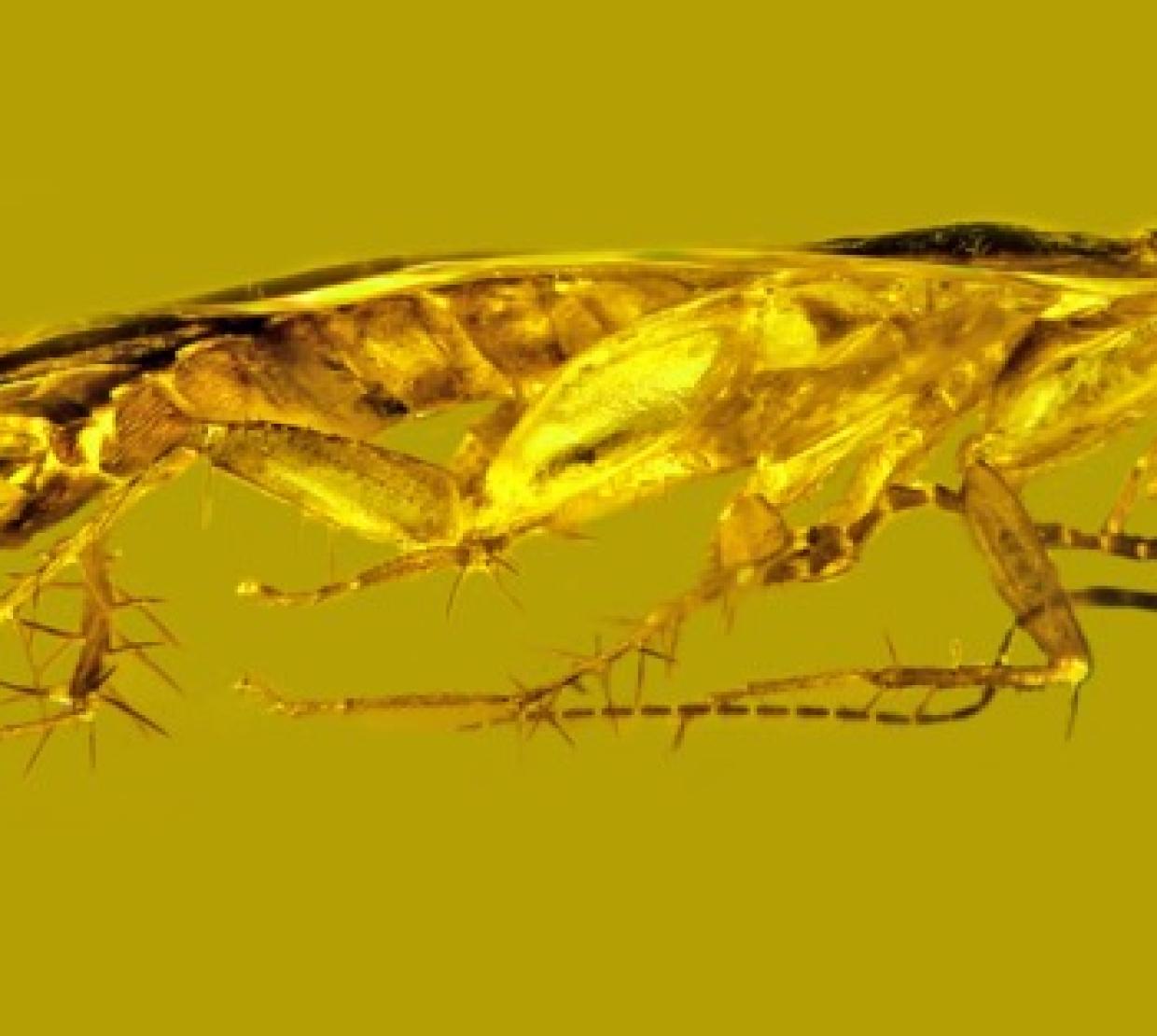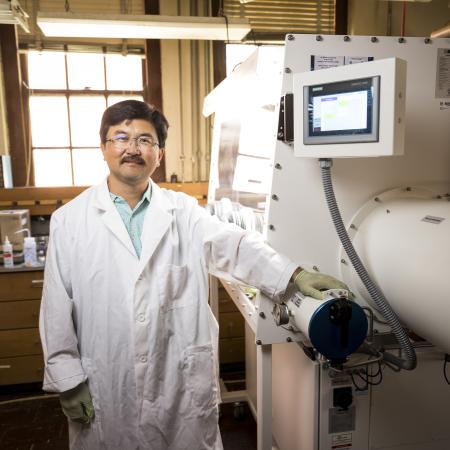The cockroach, reviled around the world for its sickness-causing potential and general creepiness, now occupies an important position in the study of amber fossils thanks to research by a College of Science researcher.
George Poinar Jr., professor emeritus in the College of Science, has identified a new cockroach species. The male specimen, which Poinar named Supella dominicana, is encased in Dominican amber and is the first fossil cockroach to be found with sperm cells.
“It is well preserved with a yellow cross bar across the wings and a central, vertical, yellow stripe that appears to divide the body into two parts,” he said. “It has long spines, used for defense, on its legs, especially the hind legs. Also of interest is the sperm bundle containing spermatozoa with dark acrosomes, structures covering the head of the sperm, since fossil sperm are rare.”
The specimen, about 30 million years old, is also the only cockroach of its variety, ectobiid, to be discovered in amber from the Dominican Republic, though it has no living descendants in the country or anywhere in the West Indies.
As is the case with another Supella cockroach described earlier from Mexican amber, S. dominicana’s closest living relatives are in Africa and Asia.
“So what caused these cockroaches to become extinct when it is so difficult to get rid of them today?” wondered Poinar, an international expert in using plant and animal life forms preserved in amber to learn about the biology and ecology of the distant past.
There are more than 4,000 species of cockroaches crawling around multiple habitats all over the Earth, but only about 30 types of roaches share habitat with humans, and just a handful of those are regarded as pests. But they are highly regarded as such, Poinar notes.
Ancient, primitive and extraordinarily resilient, cockroaches can survive in temperatures well below freezing and can withstand pressures of up to 900 times their body weight, he said — which means if you try to kill one by stepping on it, you probably won’t succeed.
Read more here.




